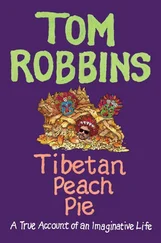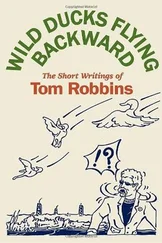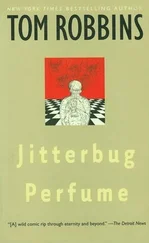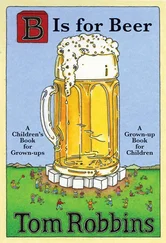The Clock People, as we now know them, divided themselves into thirteen families, not necessarily along tribal lines. (What is the numerical significance of the Clock People's taking thirteen months to structure their ritual, then separating into thirteen families? Well, briefly, they consider thirteen a more natural number than twelve. To the Babylonians, thirteen was unlucky. That is why, when they invented astrology, they willfully overlooked a major constellation, erroneously assigning to the zodiac only twelve houses. The Clock People knew nothing of Babylonian superstition, but they knew the stars, and it was partly in an effort to override the unnatural twelve-mindedness of Western culture that they chose to give thirteen its due.) To each family was assigned the responsibility for one section of the Great Burrow. Each family knows one section inch by inch, but is completely ignorant of the other twelve sections. So no one family nor individual knows the Way. The Way, of course, being the true path that takes one through the Great Burrow maze to the clockworks. Moreover, it is not possible for the families to compile a map of the Way, for each family holds as a sacred secret its knowledge of its burrow or section of the Way.
(In naming these tunnel sections “burrows,” the Clock People were not particularly identifying with animals — no more so than were the Indians in whose culture totems played such a large and vivid role. Totemically oriented Indians utilized the characteristics of certain animals metaphorically . It was simply a form of poetic symbolism. They used animals to think with.)
Okay. Who gets to the clockworks, how and when? Each morning at sunrise that day's designated guides — one from each of the thirteen families — gather at the portal of the Great Burrow. Then they are all blindfolded, except for the guide representing the Family of the First Burrow. The blindfolded twelve link hands and are led by the first guide through any of several routes he or she may take to reach the beginning of the Second Burrow. A guide will purposefully attempt never to use the same route twice. Often a guide will backtrack, and sometimes he or she will instruct the others in the party to let go of each other's hands and spin. Since, by this date, there are around twenty members in each family, an individual acts as guide only about thirteen times a year.
Now, when the first guide reaches the terminus of his burrow and the beginning of the next, he instructs the guide for the Second Burrow to remove his blindfold, and then binds his own eyes. And so it goes until the group is at the large central chamber that contains the clockworks. There, they go about “keeping the time” until the hour for the return trip. Theoretically, the thirteen daily guides emerge from the Great Burrow at sunset, although this occurs in actuality only on those days when there are thirteen hours of daylight.
Occasionally other people accompany the guides on their mission. An aged or sickly person who is about to die or a pregnant woman commencing labor is led, blindfolded, to the central burrow, for insofar as it is possible, all Clock People deaths and births occur in the presence of the clockworks. Aside from birthing or dying, the reason for the daily visits to the clockworks is to check the time.
Maybe we should say “check the times ,” for the clockworks is really two clocks and the sort of time each one measures is quite distinct. (Maybe we should also establish that it is the original clockworks that is being described here: there was later to be another, and the second figures even more prominently in our story.)
First, there is a huge hourglass, at least seven feet in diameter and thirteen feet tall, made from the finely stitched and tightly stretched internal membranes of large beasts (elk, bears, mountain lions). The hourglass is filled with acorns, enough so that it takes them approximately thirteen hours to pour or funnel, one by one, through the slender passage in the waist of the transparent device. When the daily guides enter the soul burrow, the hourglass is turned on its opposite end. When they depart — in approximately thirteen hours — they flip it again. So “checking the time,” or “keeping the time” is, in the twenty-six-hour day of the Clock People, the same as “making time,” or, more generally, “making history.” The Clock People believe that they are making history and that the end of history will come with the destruction of the clockworks.
Please do not construe the “end of history” or the “end of time” to mean “the end of life” or what is normally meant by the apocalyptically minded when they speak (almost wishfully, it seems) of the “end of the world.” That is paranoiac rubbish, and however one may finally evaluate the Clock People, their philosophy must be appreciated on a higher plane than doomsday drivel.
Well, then, what do the Clock People mean by the end of history and how will the clockworks be destroyed?
Zoom in on this: These people, these clandestinely exiled Indians, have no other ritual than this one: THE CHECKING OF THE CLOCKWORKS — the keeping/making of history. Likewise, they have but one legend or cultural myth: that of a continuum they call the Eternity of Joy. It is into the Eternity of Joy that they believe all men will pass once the clockworks is destroyed. They look forward to a state of timelessness, when bored, frustrated and unfulfilled people will no longer have to “kill time,” for time will finally be dead.
They are preparing for timelessness by eliminating from their culture all rules, schedules and moral standards other than those that are directly involved with the keeping of the clockworks. The Clock People may be the most completely anarchistic community that has ever existed. Rather, they may be the first community so far in which anarchy has come close to working. That is impressive in itself and should fan with peacock tails of optimism all those who dream of the ideal social condition.
The Clock People manage their anarchism (if that is not a contradiction) simply because they have channeled all of their authoritarian compulsions and control mania into a single ritual. It is clearly understood by all members of the community that there is no other ritual, no other required belief than this ONE — and, furthermore, that they themselves created the ritual: they have no silly superstitions about gods or ancestor spirits who hold this ritual over their heads in return for homage and/or “good” conduct.
Ritual, usually, is an action or ceremony employed to create a unity of mind among a congregation or community. The Clock People see the keeping of the clockworks as the last of the communal rituals. With the destruction of the clockworks, that is, at the end of time, all rituals will be personal and idiosyncratic, serving not to unify a community/cult in a common cause but to link each single individual with the universe in whatever manner suits him or her best. Unity will give way to plurality in the Eternity of Joy, although, since the universe is simultaneously many and One, whatever links the individual to the universe will automatically link him or her to all others, even while it enhances his or her completely separate identity in an eternal milkshake unclabbered by time. Thus, paradoxically, the replacement of societal with individual rituals will bring about an ultimate unity vastly more universal than the plexus of communal rites that presently divides peoples into unwieldy, agitating and competing groups.
Now, the Clock People, being visionaries, are not content with their time-checking ritual. After all, it is the lone authoritarian, compulsive action that binds them. They chafe to dispense with it. If it could be eliminated, they could pass out of history and into the Eternity of Joy. Timeless, they could bear their children and bury their dead wherever they chose. However, they understand that at this evolutionary stage they still require the ritual, even as they realize that destroying the clockworks is entirely within their power.
Читать дальше












